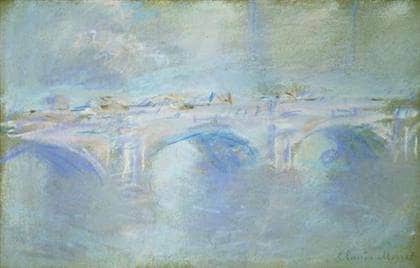Α 50-year-old man accused of stealing three paintings, including a Picasso, from Greece’s National Gallery in Athens in January 2012, in what was called the “heist of the century,” was handed a suspended prison sentence of six years on Friday.
Giorgos Sarmantzopoulos was found guilty of aggravated theft of “things of artistic value that were in a collection exposed to public view, in a public building.” The court, however, recognised his “good behaviour” after the heist as a mitigating factor and suspended his sentence pending his appeal, on the condition that he wears an electronic tag and remains within 3 km of his house.

The 50-year-old, who told authorities he was professionally engaged in construction work as a painter, admitted to stealing the paintings from what he described as “a passion for art.” They included Pablo Picasso’s 1934 work “Head of a Woman,” Piet Mondrian’s “Stammer Windmill with Summer House” (1905) and Guglielmo Caccia’s “St Diego de Alcala in Ecstasy with the Holy Trinity and the Symbols of Passion.”
Sarmantzopoulos remained at large for a decade after the heist. After his arrest in June 2021, he handed over the first two paintings to the authorities and claimed that the third was destroyed.
In court, the director of the museum’s collections, Eftychia Agathonikou, said the works suffered damage that cannot be seen with the naked eye: “The irreversible damage was seen during the inspection. The colour consistency was damaged. These works must be kept in special conditions, so they are not damaged.”
Stelios Garipis, a lawyer and art collector, told in court that he does not believe that the defendant works in construction. “He is a member of an international ring. A Dutch detective contacted me and told me that he had a lot of information about him… It was no coincidence that two works were returned,” he said.

“The [third] painting [by Guglielmo Caccia], which is supposed to have been destroyed, was rumoured to have appeared in an auction in Florence. I contacted the National Gallery to see what actions they had taken. The simplest thing would have been to send documents [to the auction house] and see who received the painting because it wasn’t sold. They [the National Gallery] did nothing.”
Garipis said the allegedly destroyed work by Caccia was subsequently identified by foreign experts who said it was the same painting as the one stolen from Athens. From the Gallery, they did nothing…The [National] Gallery did nothing. Did they go to Florence to see if the work was fake? Did they go to the auction house?”
On January 9, 2012, it was dawn when Sarmantzopoulos entered the National Gallery through an unsecured balcony door. By triggering repeated false alarms, he managed to deceive the guard and reach the paintings. He grabbed them and made his way to a staircase leading to the basement, where he sat and removed them from their frames using a pocketknife. According to one account, a second person tasked with keeping watch had been involved in the operation. Sarmantzopoulos maintains that he acted alone.


